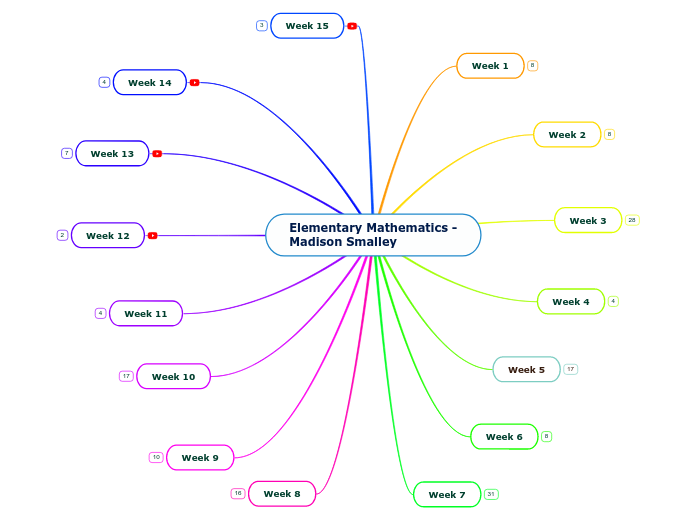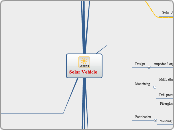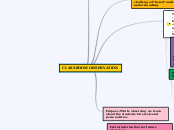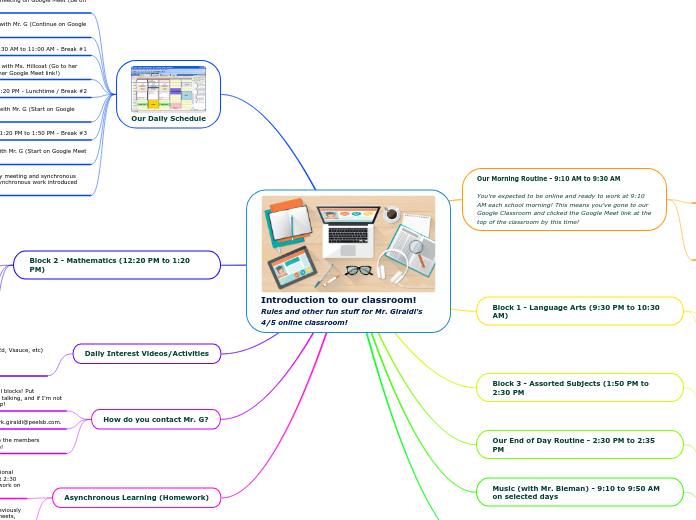Elementary Mathematics - Madison Smalley
Week 8
Extra Notes
When adding, negatives go in the front
Positives on top, negatives on bottom, and keep them in pairs
Adding a pair of 1 negative and 1 positive = Zero pairs
Red side of tiles = negative
Add/Sub Integers
Subtracting Integers
Show X using Y tiles
Zero Bank
A group of zero pairs = zero bank
Show
++
- - - - - - - - -
Model
Demonstrate Numbers
Week 9
Multiplication/Division Rules
Same sings = Positive
Different signs = Negative
Notes / Answers
Build Multiplication
2(3) / -2(3)
Solve Sub
-37+(15)
Show Sub
-5-(-2)
Week 10
Fraction
Algorithms +/-/X/
Intro to Fractions
Models
Area
Finding the fraction of a specific area from a bigger area
Set
Example: 3/7 Red or 4/7 Not Red
Linear
using length for fraction
Greater/Less/Equal
Numerator/Denominator Understanding
Numerator = what we have
Denominator = the size of the pieces we have
Week 11
Exam 2 Review
Week 12
Build and Show Fractions
Week 13
Solve: Multiple Division
Solve Multi/Div Fractions
Draw Diagram to show how to Add, Sub, and Multiply Fractions
Week 14
Solve expressions using the appropriate Order of Operations
Week 15
Final Review
Week 7
Division
Upward Division
Number Sorting
Group 3
6,7,8,9: Harder to count or do any math problems
Group 2
3 and 4: small numbers
Group1
2,5,10: Easy to count, multiply, divide, add, and subtract
Divisibility Rules
8
Look at the last three digits, divide by 8, then yes
4
Look at the last two digits, divide 4, then yes
6
If two and three work, then yes
9
Sum of the digits, divide by 9, then yes
3
Find the sum of the digit. If the whole number could be divided by three, then yes
10
If the one's digit is a zero, then yes
5
If the number ends in a 5 or a zero, then yes
2
If the number is even, then yes
Groups
5&10, 3&9, 4&8, 2,3&6
Repeated Sub
Week 6
Exam Review
Multiplication
Lattice/Area Model
Expanded Form/Left To Right
Subtopic
Left To Right: 32(29)
Expanded: 23(16)
Week 5
Multi-Digit Multiplication
Model Base ten
Array Model
Chinese
Multiplication Automaticity
FC/Best order to each to teach Multiplication Facts
1. Start with 1,2,5,10. Skip counting. 2. 3,9, doubles, also skip counting. 3. The rest of the numbers.
3 different groups:
Timed Test
Timed tests are not beneficial for students. It is more for the teachers to take the results and teach the class on the subjects that need it more.
What does 2(3) mean?
2(3) mean 2 groups of 3. (3)(3).
The difference between 2(4) and 4(2)
The difference between 2(4) and 4(2) is 2(4 is two groups of 4, while 4(2) is 4 groups of 2.
Week 4
Equal Add Ons
63-35/ +5 to both sides to make 68-40=28. This makes it easier to sub/add numbers when there is a zero in the second number.
36-24= 30&20 - 6&4 = 10&2=12
Week 3
Subtraction
469-264= 205. Take 4-2, 6-6, then 9-5. This makes it easy for student to keep place value.
Expanded
46-12/ 40-10&6-2 = 34
Equal Additions
30-17/ +3 to both sides, making 33-20= 13
28-16/ Taking the 28 and turning it into the base ten blocks, having two longs and eight units. Then turn the 16 into one long and 6 units. You would take one long from each number, the take away 6 units from each. This allows students to keep place value as well as seeing it physically.
Addition
Friendly Numbers
24+43+76+39+17/ Bring numbers that will add up to 10 together. Such as 4, from 24, and 6, from 76, making the 24 a 30, and a 70. Then the 7 from 17, to 3 from 43. making the 17 to 10, then 43 to 50. Then you will have 30+50+70+10. Adding 199.
Trade Off
37+88/ Taking numbers away from one number and adding it to the other to create a number ending in zero. You would take 2 from the 37, then add it to the 88. Creating 35+90= 125
Scratch
24=68=37=59/ Adding number until you get to ten. You would start by writing the numbers vertically, leaving space between the numbers. You would start with the units. 4+8= 12, so you would draw a line through the 8, then write a 2 next to it, signally 12. You would then add that 2 to the 7, creating 9, you then add the next number, 9. Creating 18, so you would draw a line through 9, then write a 8 next to it, signally 18. You would write the 8 at the bottom, then count the lines through the numbers. Since there was 2, you would put 2 about the 2 in 24. Then you add the 10's digits together. 2+2+6, this creates 10, so you would draw a line through the 6, then put a 0 next to it, signally a 10. Add the rest the numbers continuing this process. At the end you will have 8 at the bottom. You will then count the lines, then put that on top of the 100's place. Since there is no other number, that 1 will just drop down. Meaning 24+68+37+59=188.
Lattice Addition
246+159/ You would rewrite the numbers vertically. You would then make a box from the bottom line. Then draw two more lines creating 3 boxes for the three place values. You will then draw diagonal lines, causing the boxes to turn into triangles. You then add normally, 6+9 is 15, so you would write 15 in the triangles under 6&9. You will the same process for the rest of the numbers. After you will add diagonally. so 5+nothing=5, 1+9 is 10, so you would write a zero then bring the one to the next number, so 1+0+3=4, and so on. You will end up with 405.
Left to Right
537+265/ Take 5&2, add those two numbers together, creating 7, then 6+3=9, 7+5=12. You then can re write the number out again with the correct place value, but older students could process the 12 adding to the 10's digit. 537+265= 802.
Expanded Form
224+437/ You would write each number at based on their place value. 200+400, 20+30, 4+7. Making 600+50+11. Making 661.
Base Ten block
Using 10 Frames to visually show the numbers, and adding them together.
Understanding Triples
2-3-5 All go together. 2+3=5, 3+2=5, 5-2=3,5-3=2
What Makes an algorithm a good algorithm?
A good algorithm is based off; no new learning strategies(using information we already know), does it implement place value, is it expandable, and is it efficient.
Week 2
Convert from bases ten to other bases
Diagrams would just be drawing it out.
13 to base eight/ you would represent 13 with 1 base ten long and 3 extra units. Turning this into base eight, you can use 10 blocks to represent a long so it is easier to add together. Since it is being turned into base eight, you would take out eight units creating one loneg, then you have 5 units left over creating 15eight.
Convert from other bases to base ten:
Using diagrams would just be drawing it out instead of using the units squares.
24six being turnined into base ten. You can use the units squares to show the number of units in each long. Knowing that the base is six, this mean that there are 6 units in each long. There are 2 longs so, 2x6=12, then add the remaining 4 units, adding up to 16. So 24six is 16.
Base Ten Blocks
Place Values of 10, 10 units make 1 long, 10 longs make a flat. In different bases it would different number. Example: in base seven, it would be 7 units make a long, and 7 longs make a flat.
Week 1
Into to Bases
Video
Five and Ten Block Frames
Five and Ten blocks are used to help students count in an organized fashion, but also understand place value. In each, creating a "long" 10 longs creates a "flat"
Early Number Sets
Steps: 1. How to count 2. Which is more/Less 3. One to One Objects -Subsidizing 4. Cardinality
Playto's 4 Step Problem Strategies
1. Understand the problem
2. Devise a plan
3. Carry out the plan
4. Look back









